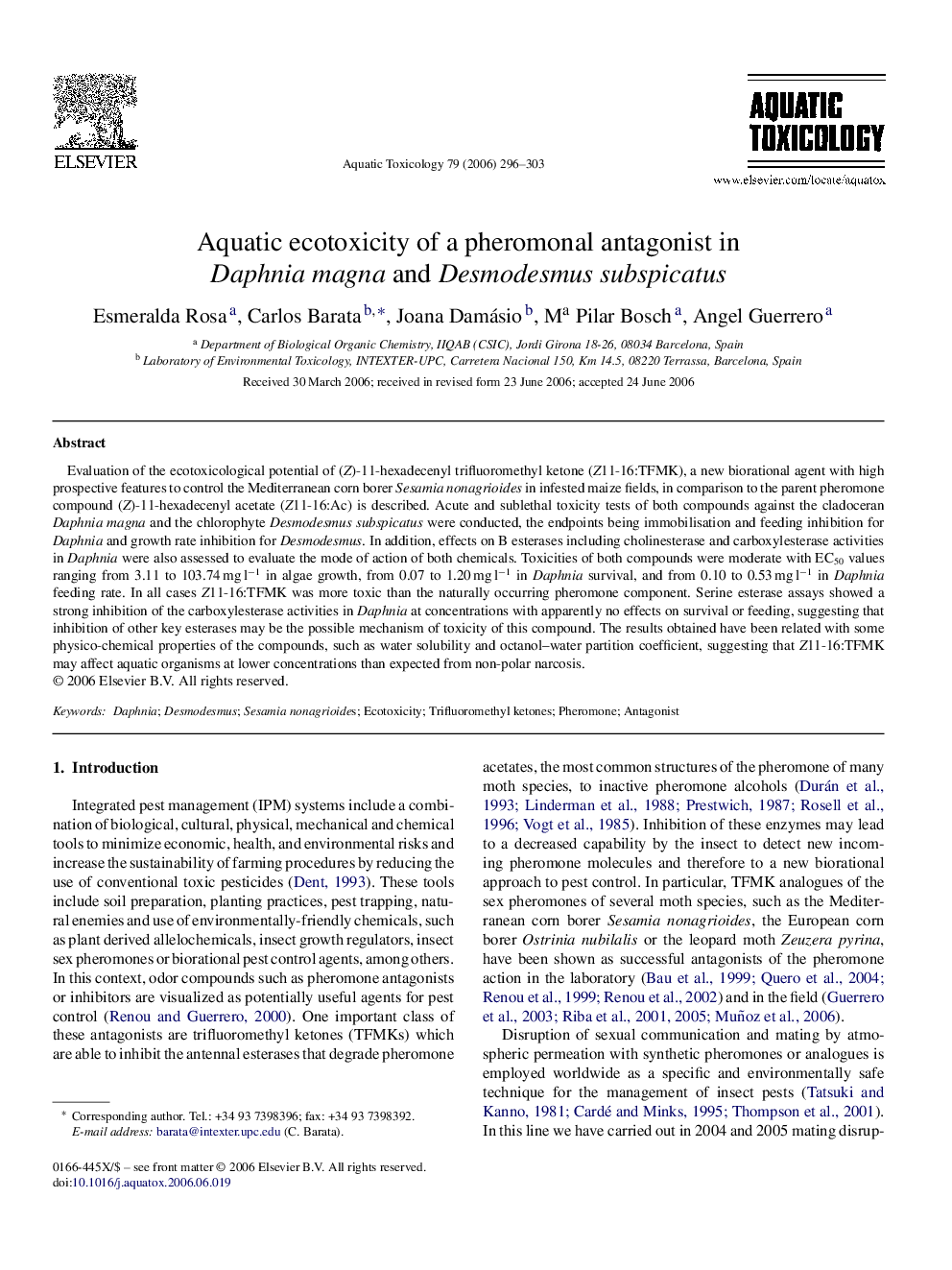| Article ID | Journal | Published Year | Pages | File Type |
|---|---|---|---|---|
| 4531270 | Aquatic Toxicology | 2006 | 8 Pages |
Evaluation of the ecotoxicological potential of (Z)-11-hexadecenyl trifluoromethyl ketone (Z11-16:TFMK), a new biorational agent with high prospective features to control the Mediterranean corn borer Sesamia nonagrioides in infested maize fields, in comparison to the parent pheromone compound (Z)-11-hexadecenyl acetate (Z11-16:Ac) is described. Acute and sublethal toxicity tests of both compounds against the cladoceran Daphnia magna and the chlorophyte Desmodesmus subspicatus were conducted, the endpoints being immobilisation and feeding inhibition for Daphnia and growth rate inhibition for Desmodesmus. In addition, effects on B esterases including cholinesterase and carboxylesterase activities in Daphnia were also assessed to evaluate the mode of action of both chemicals. Toxicities of both compounds were moderate with EC50 values ranging from 3.11 to 103.74 mg l−1 in algae growth, from 0.07 to 1.20 mg l−1 in Daphnia survival, and from 0.10 to 0.53 mg l−1 in Daphnia feeding rate. In all cases Z11-16:TFMK was more toxic than the naturally occurring pheromone component. Serine esterase assays showed a strong inhibition of the carboxylesterase activities in Daphnia at concentrations with apparently no effects on survival or feeding, suggesting that inhibition of other key esterases may be the possible mechanism of toxicity of this compound. The results obtained have been related with some physico-chemical properties of the compounds, such as water solubility and octanol–water partition coefficient, suggesting that Z11-16:TFMK may affect aquatic organisms at lower concentrations than expected from non-polar narcosis.
